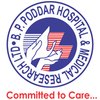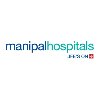Nursing Staff
100+ Nursing Staff Interview Questions and Answers

Asked in Paras Hospital

Q. What would you do if a patient has cardiac arrest?
In case of cardiac arrest, immediate action is crucial to save the patient's life through CPR and defibrillation.
Assess the situation: Check for responsiveness and breathing.
Call for help: Activate emergency response and get a defibrillator.
Start CPR: Perform chest compressions at a rate of 100-120 per minute.
Use an AED: If available, apply the Automated External Defibrillator as soon as possible.
Continue CPR: Keep performing CPR until emergency services arrive or the patient...read more

Asked in Paras Hospital

Q. What is cardiopulmonary resuscitation?
Cardiopulmonary resuscitation (CPR) is a life-saving technique used in emergencies to manually maintain blood circulation and oxygenation.
CPR is performed when a person's heart has stopped beating or they are not breathing.
It involves chest compressions to pump blood and rescue breaths to provide oxygen.
CPR can be performed by trained healthcare professionals or bystanders until advanced medical help arrives.
The American Heart Association recommends performing CPR with a rati...read more
Nursing Staff Interview Questions and Answers for Freshers

Asked in Fortis Healthcare

Q. How do you motivate patients?
Motivating patients is crucial for their recovery. Here are some ways to do it.
Encourage them to set achievable goals
Provide positive feedback and praise
Use motivational interviewing techniques
Involve them in decision-making about their care
Offer incentives or rewards for progress
Provide education and resources to help them understand their condition
Show empathy and understanding
Be a good listener and provide emotional support

Asked in Max Healthcare

Q. How can the spread of infection be prevented?
Preventing spread of infection is crucial in healthcare. Here are some ways to do it.
Wash hands frequently and properly
Use personal protective equipment (PPE) such as gloves, masks, and gowns
Cover mouth and nose when coughing or sneezing
Avoid close contact with infected individuals
Clean and disinfect surfaces regularly
Follow proper waste disposal procedures
Stay up-to-date with vaccinations
Educate patients and visitors on infection prevention measures

Asked in HCL Healthcare

Q. How would you explain the importance of a kidney function test to a patient?
Kidney function tests are crucial for assessing kidney health and detecting potential issues early.
Kidney function tests measure how well the kidneys filter waste from the blood, indicating overall kidney health.
Early detection of kidney disease can prevent complications; for example, chronic kidney disease can lead to kidney failure if untreated.
These tests help monitor existing conditions, such as diabetes or hypertension, which can affect kidney function.
Results from kidne...read more


Q. What fluid should be administered if a person's capillary blood glucose (CBG) level is 45?
For a CBG level of 45, administering a fast-acting carbohydrate solution is crucial to raise blood glucose levels quickly.
Dextrose: Administering a 50% dextrose solution (D50) intravenously can rapidly increase blood glucose levels.
Oral Glucose: If the patient is conscious and able to swallow, providing glucose tablets or a sugary drink can be effective.
Monitoring: Continuous monitoring of blood glucose levels is essential after administration to ensure they return to a safe ...read more
Nursing Staff Jobs




Asked in Cloudnine Hospital

Q. How do you prioritize tasks when managing multiple patients or responsibilities?
I prioritize tasks by assessing patient needs, urgency, and available resources to ensure effective care delivery.
Assess patient acuity: For example, prioritize a patient in respiratory distress over one with a minor injury.
Use a systematic approach: Implement the ABCs (Airway, Breathing, Circulation) to guide immediate care decisions.
Communicate with the team: Regularly update and consult with colleagues to redistribute tasks based on changing patient needs.
Document and revi...read more


Q. What medications should be administered to a person experiencing a heart attack?
Medications for a heart attack include antiplatelets, thrombolytics, and beta-blockers to manage symptoms and improve outcomes.
Aspirin: Administered to reduce blood clotting and improve blood flow to the heart.
Nitroglycerin: Used to relieve chest pain by dilating blood vessels and reducing the heart's workload.
Thrombolytics (e.g., alteplase): Administered to dissolve blood clots blocking coronary arteries.
Beta-blockers (e.g., metoprolol): Help decrease heart rate and blood pr...read more
Share interview questions and help millions of jobseekers 🌟

Asked in Medicover Group of Hospitals

Q. What would my first month look like if I were hired for this position?
Your first month will involve orientation, training, and gradually taking on patient care responsibilities.
Week 1: Orientation to hospital policies, procedures, and team introductions.
Week 2: Shadowing experienced nurses to learn daily routines and patient care protocols.
Week 3: Hands-on training with supervision, starting to manage a small patient load.
Week 4: Regular feedback sessions with your supervisor to discuss progress and areas for improvement.

Asked in Cloudnine Hospital

Q. For which conditions is Syntocin medication given to patients?
Syntocin medication is given to patients for inducing labor, controlling postpartum bleeding, and managing incomplete or inevitable abortion.
Inducing labor in pregnant women
Controlling postpartum bleeding after childbirth
Managing incomplete or inevitable abortion
Administered intravenously or intramuscularly
Dosage and administration should be carefully monitored by healthcare professionals


Q. What is the highest mark on the Glasgow Coma Scale?
The highest mark on the Glasgow Coma Scale is 15, indicating a fully alert and responsive patient.
Eye Opening (4 points): Spontaneous eye opening indicates full alertness.
Verbal Response (5 points): Oriented conversation shows the patient is aware of their surroundings.
Motor Response (6 points): Following commands demonstrates full motor function.
Asked in BSC Academy

Q. Give the technical description of Anthous of Allium.
Anthous of Allium is the technical term for the flower head of the Allium plant.
Anthous of Allium is composed of many small flowers clustered together in a spherical shape.
The flower head of Allium plants can vary in color, including shades of purple, pink, white, and blue.
Each small flower in the Anthous of Allium has six petals and a central stamen.
Allium plants are commonly known as ornamental onions and are popular in gardens for their unique flower heads.
Asked in BSC Academy

Q. What are parthenocarpic fruits, and how are they useful?
Parthenocarpic fruits are fruits that develop without fertilization, resulting in seedless fruit production.
Parthenocarpic fruits are produced without the need for pollination or fertilization.
They are often seedless, making them more desirable for consumption.
Examples include seedless grapes, bananas, and cucumbers.
Parthenocarpy can be induced artificially through hormone treatments or genetic modifications.

Asked in Fortis Memorial Research Institute

Q. What are the various categories of biomedical waste?
Biomedical waste is categorized into various types based on its origin and potential hazards.
1. Infectious Waste: Contaminated materials like used bandages and syringes.
2. Hazardous Waste: Chemicals and pharmaceuticals that can be toxic.
3. Radioactive Waste: Materials used in radiology, such as used needles from radioactive treatments.
4. General Waste: Non-hazardous waste like paper and packaging.
5. Sharps Waste: Needles, blades, and other sharp objects that can cause injury.

Asked in Metro Group of Hospitals

Q. List down GT diseases? What will you do if pateint having breathing difficulties
GT diseases include cystic fibrosis, sickle cell anemia, and Huntington's disease.
Cystic fibrosis is a genetic disorder that affects the lungs and digestive system.
Sickle cell anemia is a genetic blood disorder that causes red blood cells to become misshapen and break down.
Huntington's disease is a genetic disorder that causes the progressive breakdown of nerve cells in the brain.

Asked in Cloudnine Hospital

Q. Explain the catheter tray and how to start the procedure.
A catheter tray contains essential tools for catheterization, ensuring a sterile and efficient procedure.
Gather the catheter tray, which typically includes a catheter, sterile gloves, antiseptic solution, and a drainage bag.
Perform hand hygiene before starting the procedure to maintain sterility.
Open the catheter tray using the sterile technique, ensuring that the contents remain uncontaminated.
Put on sterile gloves and prepare the patient by explaining the procedure and posi...read more
Asked in Shanku Medicity - SMC

Q. BMW disposal process,what we do if a patient is hypoglycemic
In the BMW disposal process for a hypoglycemic patient, follow proper protocols to ensure safe and effective treatment.
Check the patient's blood glucose levels to confirm hypoglycemia
Administer glucose orally or intravenously as needed
Monitor the patient closely for signs of improvement or worsening
Dispose of any used medical supplies properly according to BMW guidelines

Asked in Manipal Hospitals

Q. What can a nursing staff do if a cardiac arrest patient has a higher number of staffs present?
In a cardiac arrest situation, staff must act quickly to provide life-saving interventions and support.
Call for emergency assistance immediately.
Initiate CPR (Cardiopulmonary Resuscitation) without delay.
Use an AED (Automated External Defibrillator) if available.
Ensure the patient is on a flat surface for effective compressions.
Continue CPR until professional help arrives or the patient shows signs of life.

Asked in Cloudnine Hospital

Q. Below 40 and give first feed then recheck and again low so give dextrose 2ml /kg
The infant's blood sugar level is below 40, so first feed should be given. If blood sugar remains low, administer dextrose 2ml/kg.
Check blood sugar level before feeding
If blood sugar is below 40, give first feed
Recheck blood sugar level after feeding
If blood sugar remains low, administer dextrose 2ml/kg
Monitor infant's response to treatment

Asked in Shalby Hospitals

Q. How many pulse points are there in the human body?
Nurses are trained to feel pulses in a human body to assess heart rate and rhythm.
Nurses are taught to feel pulses in various locations on the body such as the wrist, neck, and groin.
They use their fingers to gently press on the artery to detect the pulsation.
Feeling the pulse helps nurses assess the heart rate, rhythm, and overall cardiovascular health of the patient.

Asked in Narayana Health

Q. Is the code of conduct used by the judges?
Judges adhere to a code of conduct to ensure fairness, integrity, and professionalism in the judicial system.
Judges must remain impartial and avoid conflicts of interest, such as not presiding over cases involving personal acquaintances.
They are required to maintain confidentiality regarding sensitive case information to protect the integrity of the judicial process.
Judges should avoid any appearance of bias, ensuring that their decisions are based solely on the law and evide...read more


Q. What is the process for calculating drop?
Calculating drops involves determining the flow rate for IV fluids based on the drop factor and desired infusion rate.
Identify the drop factor: This is usually provided on the IV tubing packaging, e.g., 15 gtt/mL.
Determine the desired infusion rate: This is the rate at which the fluid should be administered, e.g., 100 mL/hour.
Use the formula: Drops per minute (gtt/min) = (Volume to be infused in mL × Drop factor) / Time in minutes.
Example: For 100 mL/hour with a drop factor o...read more
Asked in Medicover Group of Hospitals

Q. How do you handle stress, pressure, and anxiety?
I manage stress through effective time management, mindfulness, and seeking support from colleagues when needed.
Prioritize tasks: I create a daily to-do list to focus on urgent responsibilities, ensuring I meet deadlines.
Practice mindfulness: I take short breaks to practice deep breathing or meditation, which helps me regain focus and calm my mind.
Seek support: I communicate with my colleagues during high-pressure situations, sharing insights and strategies to manage workload...read more

Asked in Dr. Rela Institute & Medical Centre

Q. Define IPSG and list its components.
IPSG stands for Infection Prevention and Safety Goals.
IPSG is a set of guidelines and goals aimed at preventing infections and ensuring safety in healthcare settings.
It is developed by the Joint Commission, an independent organization that accredits and certifies healthcare organizations.
The IPSG includes various measures such as hand hygiene, proper use of personal protective equipment, safe injection practices, and prevention of healthcare-associated infections.
These goals ...read more

Asked in Cloudnine Hospital

Q. How many vaccines are administered to a baby at birth?
At birth, infants typically receive the Hepatitis B vaccine to protect against liver infection.
The Hepatitis B vaccine is usually given within 24 hours of birth.
This vaccine is crucial for preventing serious liver disease later in life.
In some cases, additional vaccines may be administered based on local guidelines.


Q. What class of drugs does Ondem belong to?
Ondem is an antiemetic medication used to prevent nausea and vomiting, particularly in chemotherapy and surgery patients.
Class: Ondem belongs to the class of drugs known as 5-HT3 receptor antagonists, which block serotonin receptors in the gut and brain.
Indications: It is commonly used to prevent nausea and vomiting caused by chemotherapy, radiation therapy, and postoperative recovery.
Examples: Other drugs in the same class include Granisetron and Palonosetron, which also ser...read more

Asked in Apollo Hospitals

Q. What are the assessments during delivery?
Assessment in delivery time involves evaluating the progress of labor and monitoring the mother and baby for any complications.
Assessing cervical dilation and effacement
Monitoring fetal heart rate
Checking for signs of distress in the mother or baby
Assessing the need for pain management
Evaluating progress towards delivery

Asked in Cloudnine Hospital

Q. Management of pph Management of aph Management of 3rd stage of labour Management of pih
Effective management of obstetric complications is crucial for maternal and fetal health during labor and delivery.
Management of PPH (Postpartum Hemorrhage): Immediate assessment of uterine tone, administration of uterotonics like oxytocin, and fluid resuscitation.
Management of APH (Antepartum Hemorrhage): Identify the cause (e.g., placenta previa or abruption), monitor fetal heart rate, and prepare for possible delivery.
Management of 3rd Stage of Labor: Ensure active managem...read more

Asked in The Kids Clinic

Q. What is your knowledge about lection?
Lection refers to the process of selecting or choosing something, often used in the context of medical treatments or interventions.
Lection involves carefully choosing the most appropriate treatment or intervention for a patient based on their condition and needs.
It requires knowledge of different treatment options, their potential benefits and risks, and the patient's preferences.
Examples include selecting the most effective medication for a specific illness, choosing the bes...read more

Asked in Narayana Health

Q. Which solution are we using for handwashing?
Handwashing solutions typically include soap and water or alcohol-based hand sanitizers to ensure effective hygiene.
Soap and water are the most effective for removing dirt and germs.
Alcohol-based hand sanitizers (at least 60% alcohol) are effective when soap and water are not available.
Antimicrobial soaps may be used in healthcare settings for additional germ-killing properties.
Proper handwashing technique involves scrubbing for at least 20 seconds.
Interview Questions of Similar Designations
Interview Experiences of Popular Companies








Reviews
Interviews
Salaries
Users
















